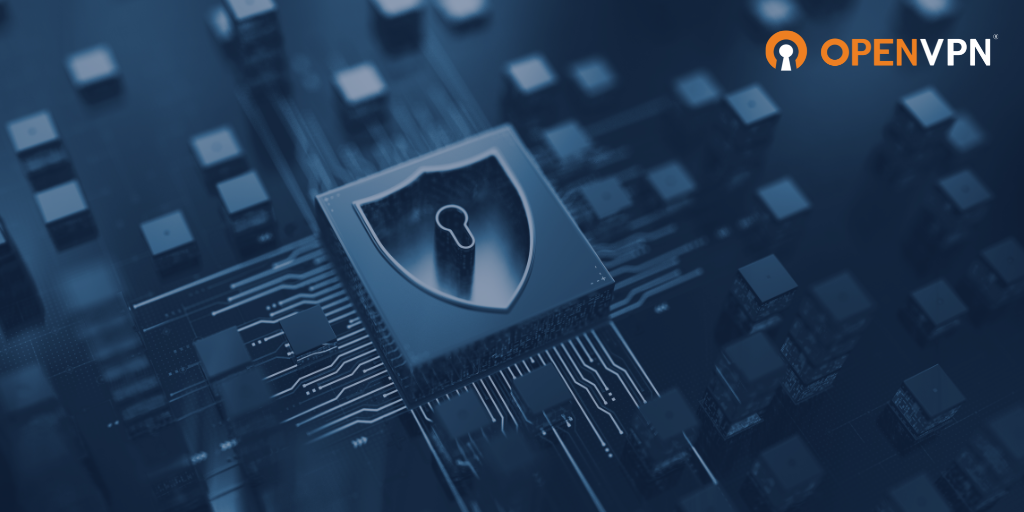What is Secure Remote Access?

By OpenVPN Team
OpenVPN Cloud is now CloudConnexa® — learn more here.
Remote work is the new normal for countless businesses today, and secure remote access is a critical component of a robust cybersecurity strategy. Secure remote access allows your hybrid or remote workforce to work from anywhere, at any time, on any device, without compromising the security of your organization's data and systems.
Here, we’ll break down what secure remote access is, why it benefits businesses and consumers alike, how to achieve it, and what challenges to expect.
What is secure remote access?
Secure remote access refers to the technologies, policies, and procedures that allow authorized users to safely connect to an organization's internal network resources from external locations. It ensures that only verified users can access sensitive data and systems, regardless of their physical location or device.
It can be challenging to allocate resources, but you deserve a practical approach that offers real protection without sacrificing productivity in the name of security.
Secure remote access is a mix of security strategies designed to prevent unauthorized access to an organization’s network and digital assets and to reduce the risk of data loss. Each organization’s approach is unique, but most involve a combination of policies, solutions, and processes that collectively reduce your attack surface and prevent bad actors from gaining access to your network.
For additional statistics and perspectives, see our insights on remote workforce cybersecurity trends.
Good to Know: Secure remote access should not be confused with remote control or a remote desktop. These are separate concepts entirely.
Our self-hosted solution, Access Server, and our cloud-based managed solution, CloudConnexa, can help your organization achieve its secure access goals.
VPN and Encryption
VPNs create secure tunnels between remote users and company networks, protecting data from prying eyes, especially on public Wi-Fi networks like those in coffee shops and airports.
These tunnels rely on secure protocols like OpenVPN or WireGuard, and data is further protected by strong encryption standards such as AES-256, which ensures information stays private and unreadable to outsiders.
VPNs offer significant benefits for modern businesses. To learn more, check out more reasons your business needs a VPN.
MFA and SSO
Multi-Factor Authentication (MFA) adds an essential layer of login security, typically requiring a time-based code or biometric input in addition to a password. This helps protect against stolen credentials and unauthorized access.
Single Sign-On (SSO) streamlines access by allowing users to log in once and gain access to multiple apps or systems. It reduces password fatigue and supports compliance initiatives such as SOC 2.
Firewalls and Endpoint Security
Next-generation firewalls scan incoming traffic for threats and enforce access controls to prevent unauthorized users from reaching the network.
Endpoint Detection and Response (EDR) tools secure remote devices by monitoring for threats, installing critical security patches, and ensuring device health. This is essential for protecting laptops, smartphones, and tablets used by remote workers.
Benefits of secure remote access
With the right security measures in place, secure remote access offers a wide range of benefits. Here are a few of the most impactful:
Increased protection from cyber threats
According to Business.com, “A secure remote access system protects your employees from web-based threats such as phishing attacks, ransomware and malware while they’re logged in to your company’s network.” These incidents can lead to unauthorized access and exploitation of both company and personal data.
When you have a secure remote access framework in place, you’re helping to protect your business, your employees, third-party vendors, and your customers. Everyone wins.
Cost savings for companies and employees
A report from Global Workplace Analytics (GWA) shows that nearly 60% of employers identify cost savings as a significant benefit to remote work. According to GWA President Kate Lister, “a typical employer can save about $11,000/year for every person who works remotely half of the time. Employees can save between $2,500 and $4,000 a year (working remotely half the time) and even more if they are able to move to a less expensive area and work remotely full time.”
Improved Productivity
For employees, remote work is having a major moment. Research from Zippia indicates that “94% of employees report feeling like their work productivity is the same or higher than before they worked remotely.” Additionally, “when employees are able to work from home, their performance increases by at least 22%.”
Improved Work-Life Balance and Increased Flexibility for Employees
Remote work is here to stay. According to PwC’s US Remote Work Survey (2021), “Over half of employees (55%) would prefer to be remote at least three days a week once pandemic concerns recede.”
Remote work lets employees skip long commutes and often leads to improved mental health and lower stress levels. For working parents, the flexibility of remote work can also make childcare and household responsibilities easier to manage.
According to the Zippia report mentioned above, “75% of employees believe they have a better work-life balance working remotely.”
Secure remote access ensures that employees who want to remain remote, whether full-time or part-time, can do so safely.
Recommended Reading: COVID-19 Fast Tracks Virtualization — OpenVPN Study Reveals Remote Work is the Future
Secure Remote Access Challenges
Secure remote access solutions vary widely across organizations, and that diversity can introduce challenges, including:
- Ensuring that remote devices are secure and properly configured.
- Managing access permissions and user roles.
- Preventing unauthorized access and data breaches.
When choosing a secure remote access solution, it's important to consider factors like security features, ease of use, compatibility with existing systems, scalability, and cost.
Solutions like CloudConnexa take all the headache out of secure remote access and offer an industry-leading user experience.
One happy OpenVPN customer, Marc Edwards, described his experience with CloudConnexa in a recent customer success story: “The combination of simplicity, scalability, and price is unbeatable.”
Another customer, whose company had to make a sudden shift to remote work in early 2020, said, “The pandemic meant we could not come to the office, and we needed to facilitate access to our local resources." As for ease of use, he said CloudConnexa “was really easy and fast to set up, two things we really needed in that moment.” He added that it “allowed us to set up a system we had not seen before very quickly when otherwise, it would have taken weeks of configuration for a non-cloud VPN.”
Secure remote access doesn’t have to be complicated or convoluted. OpenVPN makes it easy.
How to Implement Secure Remote Access
Adopt Zero Trust Access
A strong secure remote access strategy begins with the Zero Trust model. Instead of granting access based on network location (such as whether a user is "inside" or "outside" a firewall), zero trust relies on verifying user identity every time access is requested. This approach ensures that only authorized users can connect—and only to the specific apps and resources they need to do their job.
To support this model, businesses should implement real-time authentication mechanisms and continuous monitoring of activity across their networks. This not only helps detect potential threats as they emerge, but also reduces lateral movement, making it significantly harder for attackers to move between systems even if one access point is compromised.
Enforce Role-Based Access & Auditing
Another crucial pillar of secure remote access is the enforcement of role-based access controls. Following the principle of least privilege, access should be granted only to the data and systems a user needs—nothing more. This can be managed using frameworks like RBAC (Role-Based Access Control) or ABAC (Attribute-Based Access Control), both of which help ensure that permissions are aligned with roles, responsibilities, and contextual attributes.
To maintain visibility and accountability, organizations should regularly audit all remote access activity, reviewing logs for anomalies or unauthorized access attempts. This proactive monitoring makes it easier to flag unusual behavior and respond quickly to potential breaches. It also supports compliance efforts with major security frameworks such as HIPAA, SOC 2, and PCI DSS, all of which require strict controls around user access and activity tracking.
Try our access control policies template to help you get started with this process.
Require MFA & Encryption
To ensure strong protection, enable multi-factor authentication (MFA) across all access points. VPN protocols like OpenVPN or WireGuard create secure tunnels for your data, while encryption protocols such as AES-256 help keep that data private and unreadable to attackers.
Learn more about MFA with OpenVPN
Train Employees and Build Awareness
Chances are your employees and vendors are connecting to your network via work and personal devices, including laptops, mobile devices, tablets, and more. There’s no one-size-fits-all approach to secure remote access, but here are a few steps to help you get started:
- Conduct a security audit.
- Implement a security policy, including strong password policies.
- Restrict access to only necessary resources (ZTNA).
- Train employees on cybersecurity best practices.
- Use secure remote access solutions like Access Server or CloudConnexa.
- Monitor and update security measures regularly.
Employee training should be consistent and actionable. Run short, regular sessions on security fundamentals, simulate phishing attacks, and teach best practices for password hygiene. Encourage employees to report suspicious activity and reward them for following security protocols.
Recommended Reading: A Guide to Going Remote in the Virtual Age
Examples of Secure Remote Access Solutions
Secure remote access typically involves layering security controls on top of core VPN technology. These may include:
- Zero trust architecture (ZTA).
- Multi-factor authentication (MFA) or Two-Factor Authentication (2FA).
- Endpoint protection.
- Firewalls.
MFA is a must in today’s digital environment. Read more here.
Contrary to popular belief, VPNs and zero trust network access (ZTNA) are not mutually exclusive. In fact, secure remote access is achievable with a business VPN that also has a zero trust architecture in place. And, according to The New Stack, “While not zero trust, per se, using secure remote access with good multifactor authentication is an essential component of a functional zero trust model.”
With CloudConnexa, secure remote access and ZTNA go hand-in-hand to offer greater control, visibility, and layered protection for your business.
Recommended Reading: The Best Multi-Factor Authentication Tool is the One Your Business Will Use
Endpoint security is another great addition to your secure access strategy. According to Security Boulevard, “IoT devices make up 30% of all network-connected endpoints, introducing novel attacks and supply chain vulnerabilities that make many companies primary targets for cybercriminals.”
Good to Know: Secure remote access is a cornerstone of both Access Server and CloudConnexa. Check out our use case here to learn how your business can benefit from an OpenVPN solution.
Secure Remote Access Case Studies
Secure remote access is a game changer for remote and hybrid workforces. The following case studies highlight real-world success stories from OpenVPN customers.
Case Study: PMG
PMG is a global, independent company providing omnichannel strategy, media, insights, and creative content production for some of the world’s most iconic brands. In operation for more than a decade, their work has even helped shape features at companies like Google and Facebook.
Read our case study on PMG here.
Case Study: Sirius Computer Solutions
Sirius Computer Solutions provides technology-based business solutions that span the enterprise, including the data center. The company focuses on customized solutions to help businesses manage operations while optimizing IT services.
Read our case study on Sirius Computer Solutions here.
Get Started Today
Get the secure network access you need and the peace of mind you deserve. Take your business to the next level with CloudConnexa or Access Server. Create an account today for three free connections with CloudConnexa or two free connections with Access Server.
And to learn even more about secure remote access, be sure to check out our e-book: A Guide to Going Remote in the Virtual Age.


